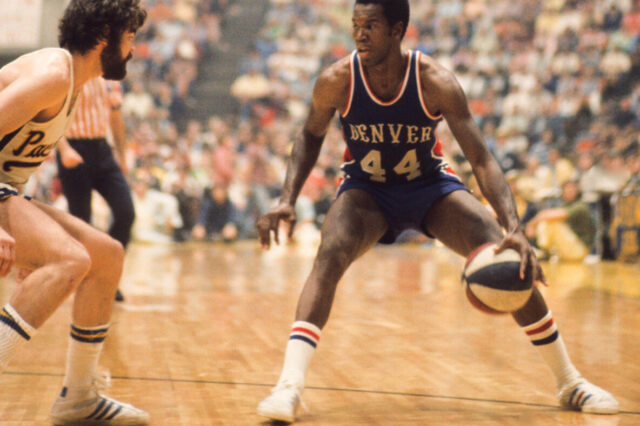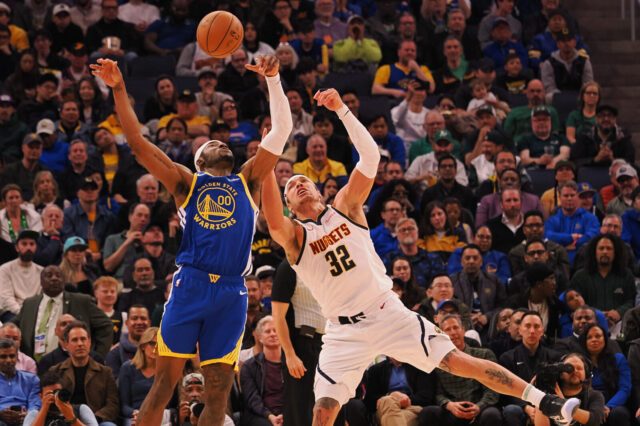If you’re not familiar with Film Fridays, each Friday, I’ll be looking at some recent Denver Nuggets’ games, lineups or something else from a film aspect to try and bring you a piece of content that you’re not getting somewhere else. Feel free to give any feedback positive or negative in the comments or find me on Twitter.
Well, it was a wild seven months, but the Nuggets’ season has come to a screeching halt after being swept in four games by the Phoenix Suns in a series where the average margin of defeat was 15.75 points while the team shot 43.5 percent from the field while the Suns shot 51.6 percent and 42.5 percent from 3-point range. The team finished with the 3rd seed in the Western Conference and the fifth-best record in the NBA despite losing star guard Jamal Murray for the final 18 games of the season along with a litany of injuries to just about every other player on the roster.
The Nuggets had just one player, Nikola Jokic, play every game this season, and he did so en route to his first career MVP award while averaging 26.4 points, 10.8 rebounds and 8.3 assists per game with a slash line of .566/.388/.868. Michael Porter Jr. had one of the most efficient seasons the NBA has ever seen as he became the youngest player to ever average 19 or more points per game with a true shooting percentage of 66 percent or better. If it weren’t for injuries to their entire guard rotation, the ceiling for this team was incredibly high.
Now, it’s time to look forward. Could we look back at the 2020-21 season? Yes, but, for now, it’s time to focus on brighter things like looking at what this team needs to do to take the next step a year from now. Health is obviously the top target of concern, but, in terms of actual on-the-court tasks, there are a few areas that the Nuggets need to address that are at the top of the priority list.
MPJ on Defense
During the two playoff series for the Nuggets, there was a common theme in both of them. Their opponent wanted to go after Michael Porter Jr. on the defensive end. Repeatedly, the guards like Devin Booker and Damian Lillard would work to get a switch where they were being guarded by Porter, and there wasn’t a reason they should have been doing so with how little resistance he was putting up against them. This offseason, he needs to work on his on-ball defense. Booker doesn’t do anything overly elaborate on this play, and I do concede that Porter was dealing with a back injury that, during the regular season, he probably would have been resting with. However, he just never has a chance here. He switches with Aaron Gordon, but he looks confused as soon as the Suns get across halfcourt. He looks at Gordon as if Gordon might be able to get there rather than focusing on the ball-handler. That’s all it takes for Booker to drive into the mid-range, stop and pull up for an easy jumper as Porter goes sprinting past him. Learning to use his length while working on his lateral agility will make him a defensive problem for his opponents rather than his teammates.
In addition to his on-ball defense, he needs to take another step with his off-ball defense. This play against the Milwaukee Bucks from February is Exhibit A of one of the improvements Porter made from Year 1 to Year 2. He’s on the lower left wing guarding Khris Middleton/Bobby Portis when the play starts. After forcing the pass out of Middleton, he starts rotating around the arc. Portis passes to Pat Connaughton who swings it to Donte DiVincenzo in the corner. As Porter is rotating, he sees Will Barton going out to Connaughton and knows that no one else is going to be able to get to Donte in the corner. He hustles and gets the block on a guy that was shooting 40.6 percent from 3-point range entering the game. Plays like this need to continue to happen, and they need to happen with greater frequency for Porter to take a huge next step.
3-point Shooters are Allowed
The Nuggets have an issue on the offensive end, and it’s a pretty big one in the modern NBA. While they were eighth in the NBA in 3-point percentage, they were just 16th in attempts per game, and their efficiency cratered with either one of Murray and Porter off of the floor. With Murray on, the team shot 39.6 percent from 3-point range compared to 35.8 percent with him off. With Porter on, their mark from outside was 39.3 percent compared to 35.8 with him off. With that pair on, lineups shot 41.8 percent from outside. Murray was the only guard on the roster that was in the top 5 in 3-point shooting for the team. Rotation players such as Facundo Campazzo, P.J. Dozier along with Gary Harris and R.J. Hampton before they were traded just weren’t consistent threats outside, and that just doesn’t work when you have players such as Murray, Porter and Jokic who all do great work inside the arc. On this play, Austin Rivers puts up a contested 3-point shot with 18 seconds on the shot clock. It doesn’t go down as a turnover, but it might as well be that. This lineup had two 3-point shooters above 36 percent in Rivers and Monte Morris, however, in this series, Rivers was shooting 26.7 percent from outside. Bring shooters in next year. They’ll want to play with Jokic, and they need to be a priority this offseason.
Plays like this are where you see just how much 3-point shooting matters. Jokic is being guarded 1-on-1 by Kevon Looney. Looney is a fine defender, and he’s gotten better as he’s gotten more experienced. It doesn’t matter how good of a defender you are against the MVP though because you’re going to need help. The problem with needing help against Jokic is his ability to find shooters, and the floor is flush with them here. Murray, Porter and Barton are spread around the perimeter, along with Campazzo, who was 2-of-2 from 3-point range on the night. Kent Bazemore wants to slide down to help, but he can’t because, even though he was ice-cold on the night, Porter is too good of a shooter to leave open. It results in an easy bucket for Jokic. Denver is never going to be the pace and space team the Golden State Warriors or the Bucks are, but surrounding their stars with shooters would help tremendously.
Get to the Line
Of the seven teams still alive in the playoffs, two of them ranked outside the top 15 in free-throw attempts per game during the regular season. Three of them, the Philadelphia 76ers, Atlanta Hawks and Brooklyn Nets, ranked inside the top eight. The Nuggets ranked 27th in makes and attempts per game while ranking eighth in percentage. It’s unlikely that the referees are going to dramatically change the way they call the Nuggets, specifically Jokic, who ranked 21st among all qualified players with 5.5 attempts per game. With that in mind, they have to learn how to get more calls to go their way because those free points add up especially in close games. Jokic doesn’t do anything particularly fantastic on this play. He catches it and drives to the basket, and, with Jusuf Nurkic off-balance, it’s easy for him to draw the foul call. If the offense doesn’t dramatically change next year, which it likely won’t, Jokic needs to make more efforts like this to draw contact and force the refs to make a tough call.
This is another play where you see the offensive player having to work to make sure he’s going to get a call. Murray gets Connaughton on his back, and he knows he has the advantage. Once the contact is there by the defender, he knows that he’s going to be able to draw a foul, and it’s just a matter of the quality of shot he’s able to get. He’s able to generate a little separation, and Pat still has to try and jump at Murray to contest the shot which he’s unable to do without fouling. With the way the league is set up, offensive players have a clear advantage, and it’s up to the Nuggets’ players to learn how to use that advantage to get more easy opportunities to score.
For those of you that are still here, remember to leave your feedback in the comments or over on my Twitter, and have a fantastic film-filled Friday.


